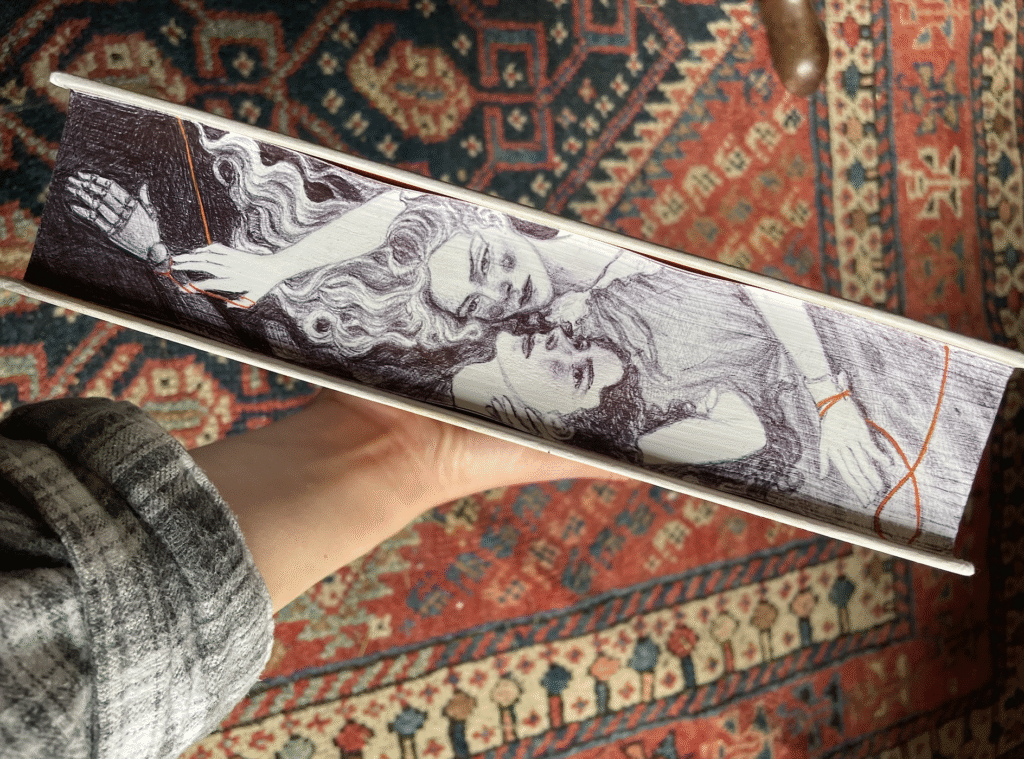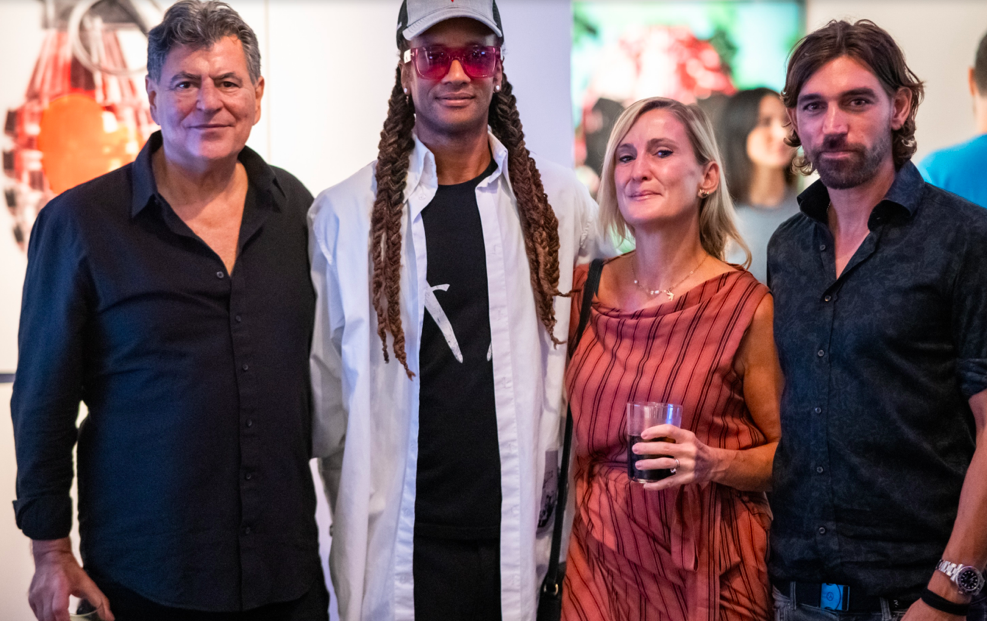Olesia Komarova’s innovative book edge Painting challenges the conventional boundaries of visual art, offering a groundbreaking perspective on the relationship between form, space, and narrative. Komarova’s compelling art delves into the unexplored territory of the ‘edge’, a concept often overlooked in the art world. Through her unique approach to painting and storytelling, Komarova transforms the edges of books into miniature canvases that stretch the limits of imagination and artistic expression.
Komarova has been working on a fore-edge painting and book restoration fundraiser project in support of Visible Women UK, an organisation whose mission is to commemorate outstanding British women. Visible Women UK are currently working on the Sylvia Townsend Warner statue construction in Dorchester. Warner was a prominent British Queer writer, and Komarova created fore-edge paintings on six books by (and about) outstanding British women to sell at auction for a Visible Women UK fundraiser.
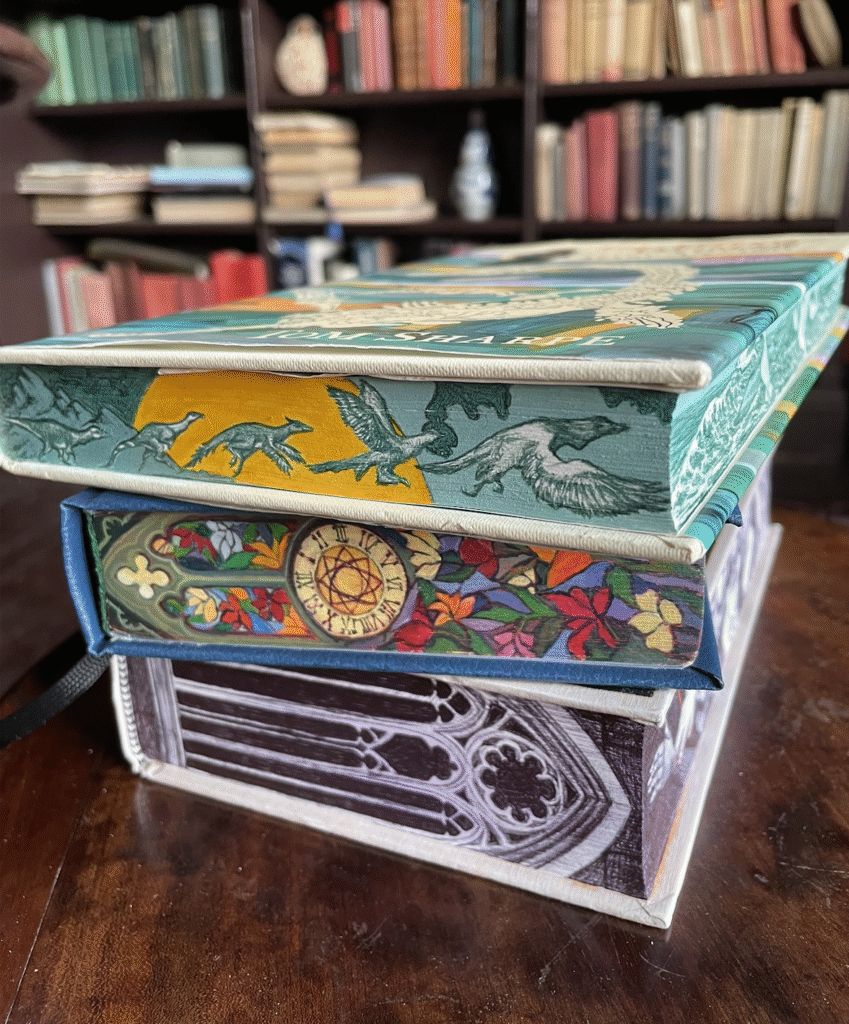
Komarova sourced most of the books in UK clearance shops then proceeded to restore and rebind them before painting beautiful imagery relating to the book’s authors and narratives on the edges. The fundraising auction for Visible Women UK features Komarova’s finely detailed fore-edge paintings for six books including Virginia Woolf’s Orlando, To the Lighthouse, and Mrs Dalloway; Sarah Waters Fingersmith; Anna Sewell Black Beauty; Tracy Chevalier The Remarkable Creatures; and Tom Sharpe’s book about fossil hunter Mary Anning–The Fossil Woman.
Komarova says: “Coming from a country with strong anti-LGBT policy, it was almost impossible for me to get such books during most of my life, so it’s really hard to see them discarded and unwanted elsewhere, which inspired me for the fore-edge painting up-cycling project. Along with helping to raise awareness about the work of Visible Women UK, through the project I hope to also raise awareness about strong censorship on book publishing still present in many countries and foster discussion on ways to break these barriers and make reading more accessible.
Lastly, being a nomad, I’ve been working on the project while constantly on the road travelling through four countries. Having to fit all the equipment and my belongings in one backpack, with this project I learnt to look at minimalism as a source for creativity and accept limitations as tools in creative process, and I hope sharing this story could inspire people not to let their constrains stop them from making art.”
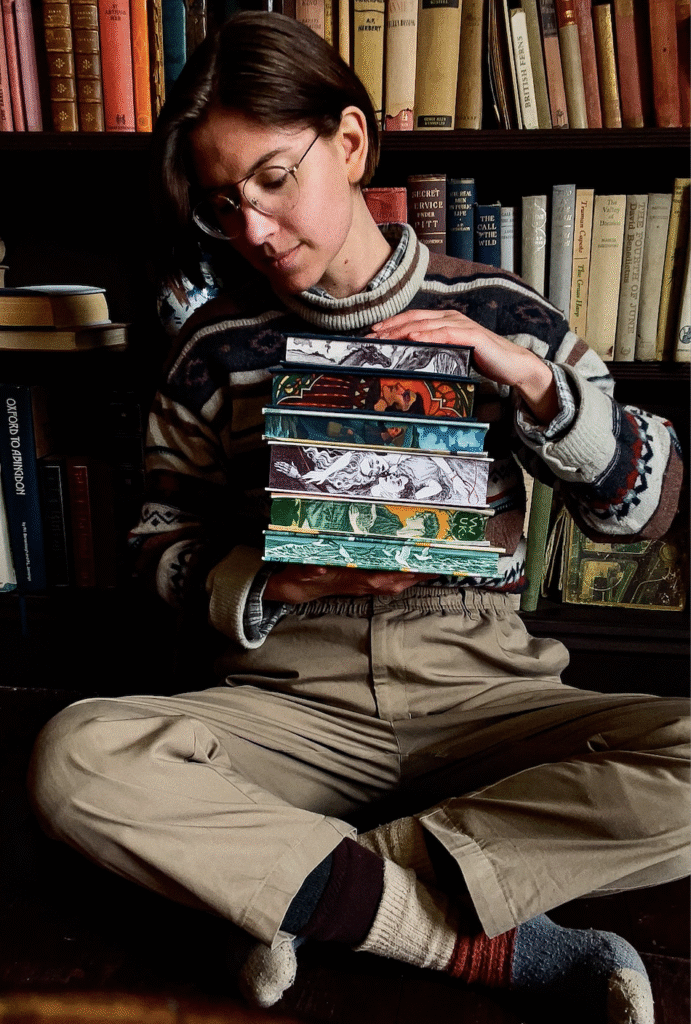
Born in Kyrgyzstan in 1999, raised in Russia and now a self-confessed travelling nomad, Olesia is a professional artist working at the intersection of art, mental health awareness activism and sustainable community practices. Combining research in illustration that she conducted during her BA in Linguistics (Tver State University) and MSc in Psychology (National Research Tomsk State University) with fine art training (The Academy of Watercolours and Fine Arts open courses in Moscow), in 2018-2023 Olesia received scholarships in Russia and Finland for her experimental work on visual bias and discrimination. Olesia’s artworks have been shortlisted for international art awards in Russia and Serbia, as well as exhibited in Finland and the UK.
Komarova’s delicate paintings on the edges of books are created using traditional media such as watercolours, ink and pencil. Komarova explains that “The artworks let the viewer step into the shoes of those, whose shoes we often do not want to be in, aiming to inspire the viewer to take action to preserve and grow the beauty of peaceful and mindful existence.”
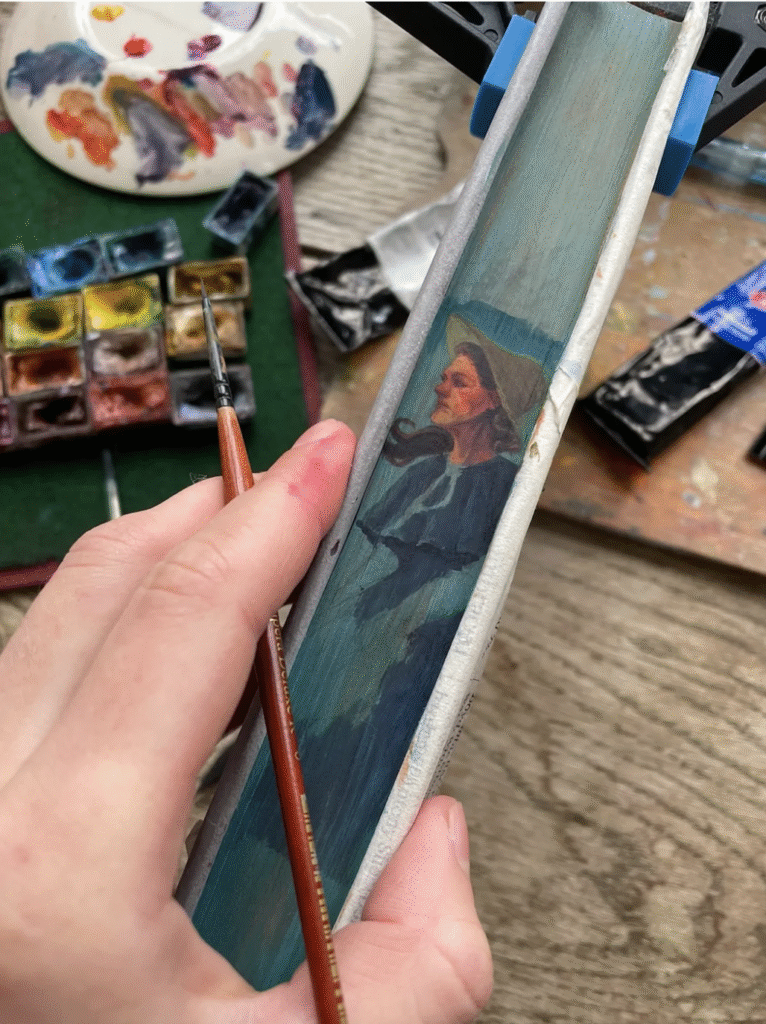
Through her book edge paintings Komarova draws attention to the neglected edges of books using them as a critical space for artistic exploration. By subverting conventional artistic mediums, Komarova invites the viewer to reconsider their understanding of space, narrative, and the role of the book in art. Komarova’s exploration of the “edge” is more than a literal artistic technique—it is a philosophical inquiry into the margins of society, identity, and the subconscious. The edges of a book or canvas often symbolize boundaries, limitations, and the unseen. Komarova uses this symbolism to push beyond what is traditionally visible, creating art that explores the unspoken, the incomplete, and the forgotten. Her work reflects the idea that the “edge” is where transformation happens, where boundaries are pushed, and where new possibilities emerge.
Find out more about the Visible Women UK fundraiser here.
Images Courtesy of Olesia Komarova.
